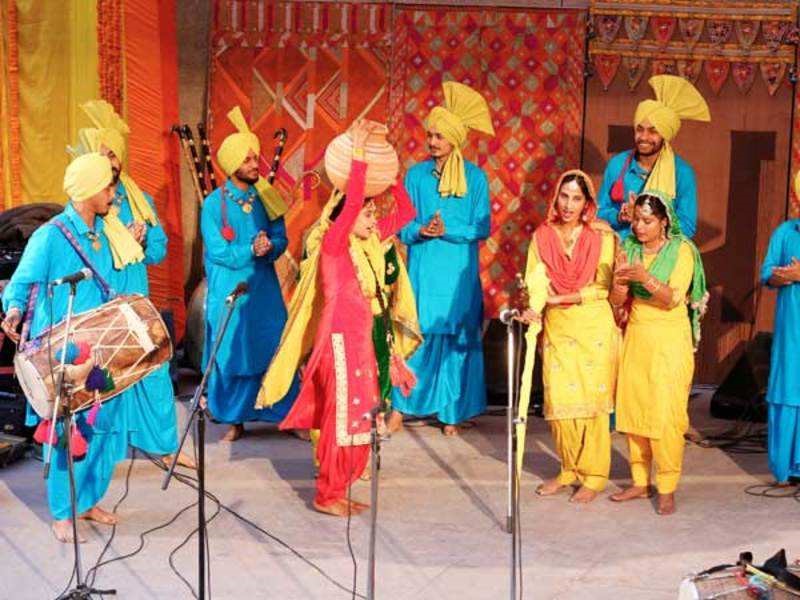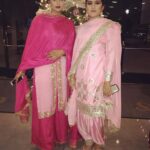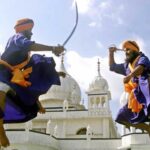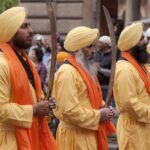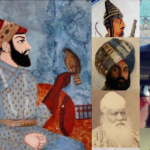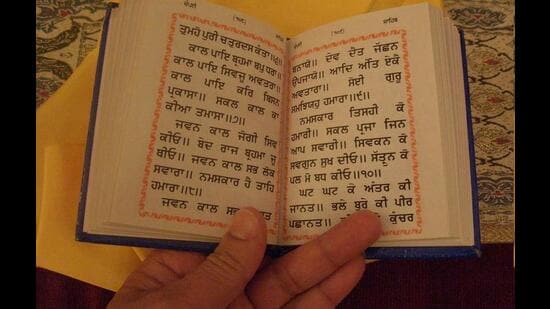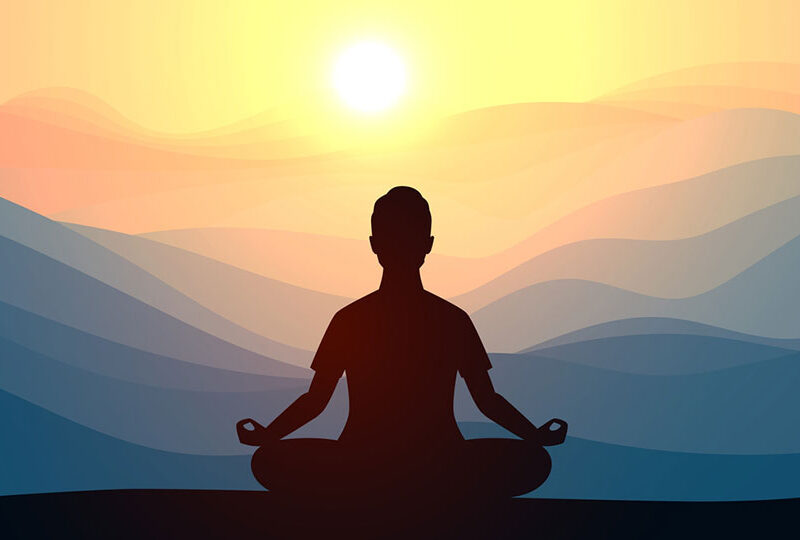Punjab has a long musical history, with traditional instruments dating back centuries. Such instruments had left an indelible mark on Punjab’s heritage. Guru Nanak Dev Ji’s follower Bhai Mardana used to play the Rabab, a string instrument. Furthermore, Punjabi folks have a musical programme for practically every occasion or holiday.
Almost all traditional dances are choreographed to the beat of a musical instrument, such as the Dholki, Dhol, Algoje, or simple Tumbi. Popular musical instruments are employed in Punjabi folk music and dances such as Bhangra and Giddha in Punjabi folk music. A few of the instruments are uncommon in usage and much harder to come by.
Here are some very well Punjabi traditional instruments, which are employed in a variety of cultural activities:
Tumbi
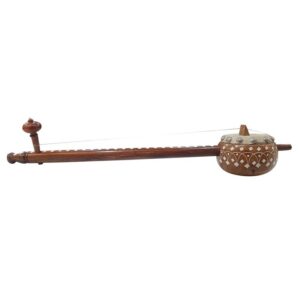
- Punjabi Music Instruments are a type of Punjabi music that has been passed down through. The single-string plucking instrument with a high pitch is linked with Punjabi folk music and is currently immensely popular in Western Bhangra music. The tumbi is a one-stringed folk instrument from Punjab, India’s northern state. The single-string plucking instrument with a high pitch is connected with Punjabi traditional music and is now extremely popular in Western Bhangra music. It’s also known as ‘ektara,’ which means ‘one-stringed.’ The tumbi is tuned by holding the instrument horizontally and strumming the string with both hands.
Dhol
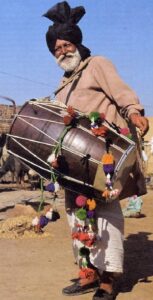
- Dhol is a conventional and classical instrument, yet it has evolved into a must-have instrument in all types of music and bands. Dhol Punjabi (Bhangra) In Punjab, the dhol is a highly important component of the local culture. It has become a symbol of Punjabi ethnic identity among Punjabis. This deep bond is particularly seen amongst some of the expatriate Punjabi populations scattered over the globe.
- The Punjabi dhol has a pretty uniform inclination.
- Both sides of the Punjabi dhol are usually played with sticks. The sticks, on the other hand, aren’t the same. There are two types of drumsticks: the dagga, which is curved, and the chanti, which is straight.
Algoza
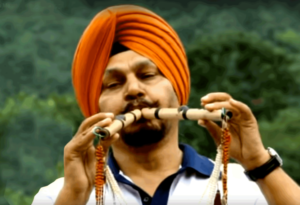
The algoza, also known as the Jori or Ngozi, is a Punjabi woodwind instrument popular among Sindhi folk singers. It has the appearance of a pair of wooden flutes. Three fingers on each side are used by the musician to play it. Breathing fast into it produces sound, and the quick taking back of breath on every beat generates a bouncy, swinging rhythm. The hardwood instrument originally had two flute pipes of equal length, though one of them was trimmed for sound reasons over time. The two-flute pipes are a pair in Alghoza performing; the longer one is the male instrument, while the shorter one would be the female instrument.
Sarangi
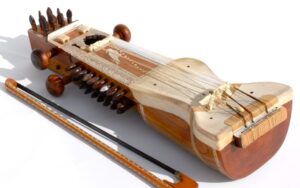
- In musical traditions, the sarangi is perhaps the most important stringed instrument. Its name is thought to signify “a hundred colours,” implying its versatility in terms of musical forms, pitch flexibility, and capacity to produce a wide spectrum of tonal colour and emotional nuance.
- The sarangi is admired for its amazing ability to reproduce the timbre and intonations of human speech, and also the depth with which it can communicate emotion.
Chimta
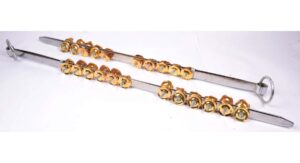
- Traditional Chimta is a lovely instrument that brings out the beauty and harmony of life. China directly means “tongs.” With the addition of little brass jingles over time, it has grown into a South Asian conventional instrument. This instrument is frequently heard in popular Punjabi folk tunes, Bhangra music, and Gurbani Kirtan, a type of Sikh liturgical music. The instrument is made up of two long flat iron pieces with pointy ends and rings attached to them. Folk songs, bhangra songs, and Sikh religious music all feature it.
Rabab
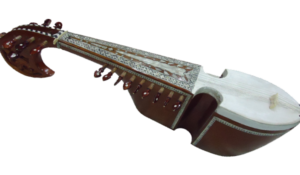
- Rabab is an Afghan string instrument that would become a Punjabi instrument when it was performed by Guru Nanak’s first pupil and friend, Bhai Mardana. It quickly became a staple of Punjabi songs.
Taus
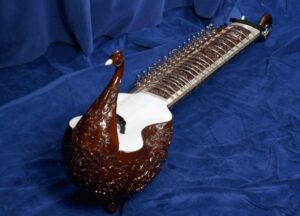
- Guru Hargobind Singh, the 6th Guru of the Sikhs, devised the taus, a Punjabi board string instrument. It has a peacock frame and a hefty metal fretboard with 20 frets. The instrument is performed with a bow and is held on a long wooden shelf with 20 to 30 strings. The equipment produces a richer toned sound.
Ghara
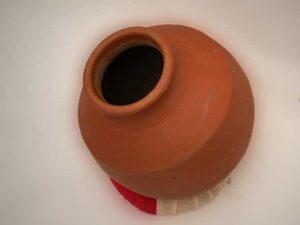
- This is a simple southern pitcher musical instrument that is utilised in folk music, songs, and festivities. It produces distinct rhythm pulses by striking the outside surfaces with a ring wrapped on a finger and also by performing on its open hand.
Dilruba
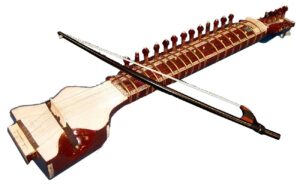
Guru Gobind Singh Ji, the 10th Guru of the Sikhs, founded it, which is also referred to as Esraj. It was created in the seventeenth century. It is regarded as a Punjabi instrument because it was introduced by a Sikh Guru, however, it was created in Patna, Bihar.
